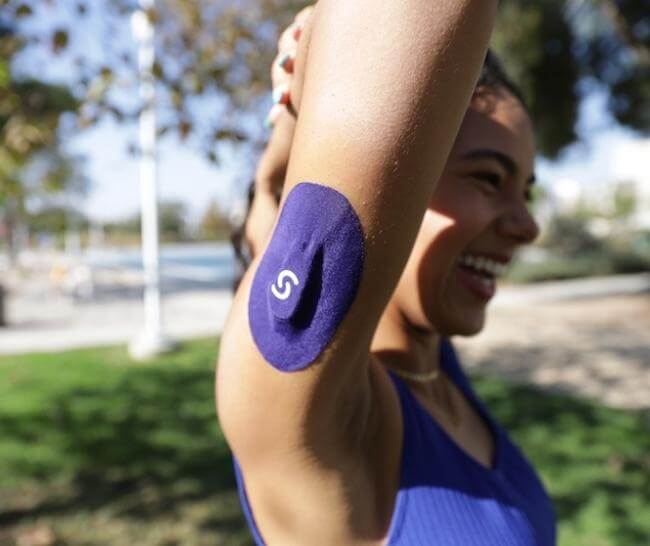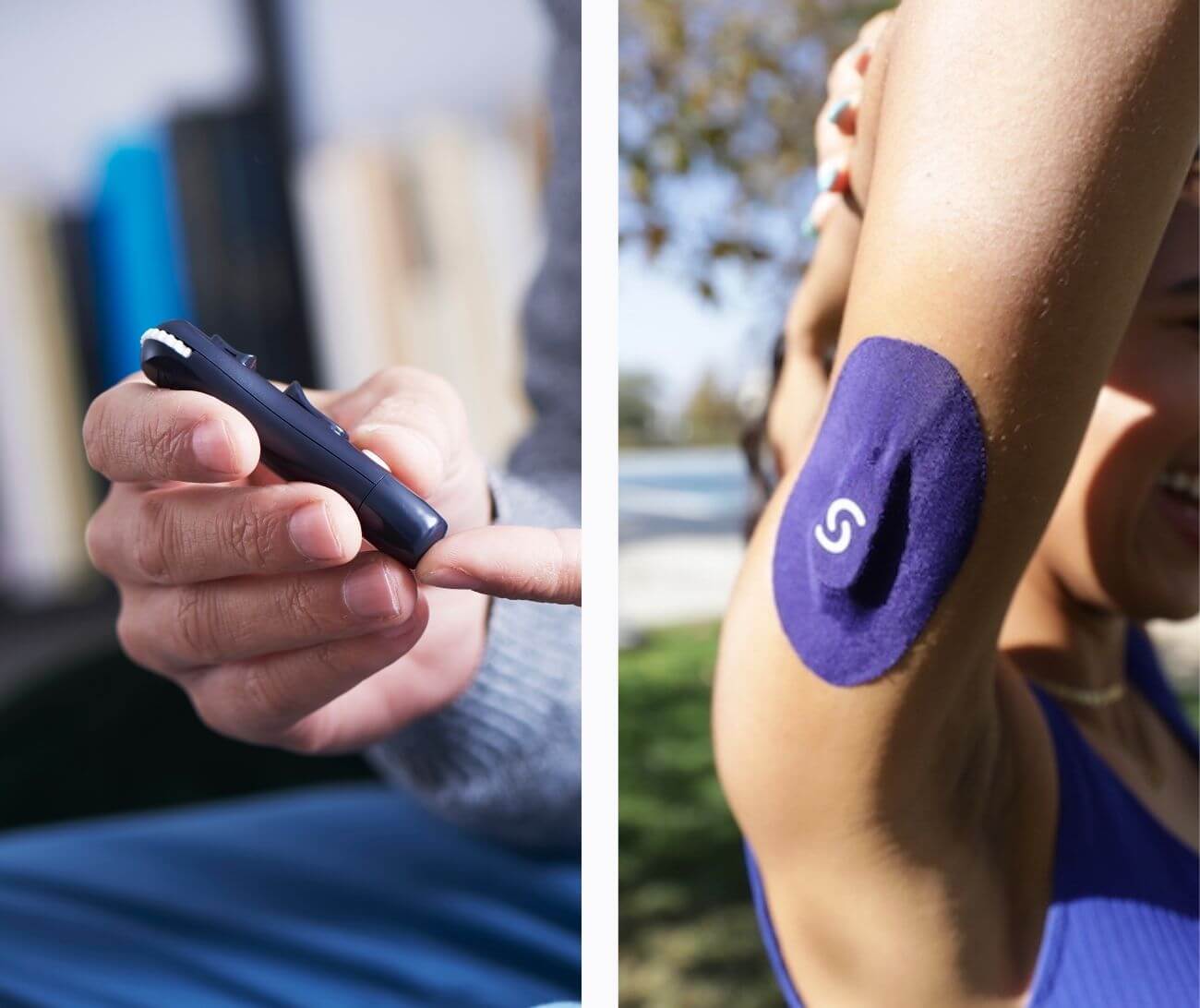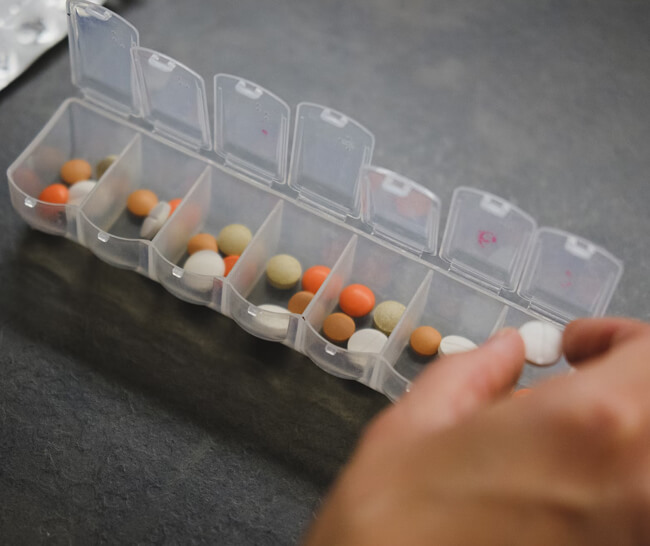Maintaining a healthy weight is a frustrating challenge for millions of Americans. In the past, the only piece of technology available to guide weight loss was the bathroom scale or calorie counting diets. Continuous glucose monitors (CGMs) track your glucose levels in real time, and while they have traditionally been used by people who are living with diabetes, CGMs can also be used to inform a person's understanding of how their body responds to the foods they eat, sleep, stress, and more.
Can CGMs Help You Lose Weight?
Signos is in the process of conducting research on the feasibility of CGM use for weight loss. This IRB study—with 20,000 participants—will collect three years of CGM data to show how efficacious the Signos program is in helping people lose weight, improve body composition, and promote overall wellness<sup>1</sup>. The estimated study completion date is fall of 2026.
But, the research we currently have at our disposal offers good reason to be optimistic. Undergirding the approach is the idea that controlling blood sugar swings can help with weight loss—a theory based on a sound foundation of scientific research.
<p class="pro-tip">Learn more: How CGMs Work</p>
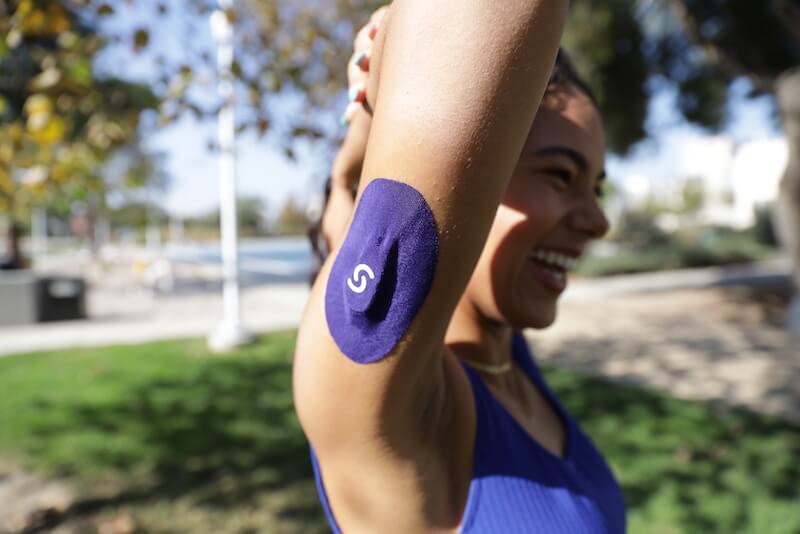
What is the Connection Between Glucose, Insulin, and Body Weight
A simplified explanation: When we eat, the body has to break down food into its basic nutrition components - glucose. Glucose is then absorbed into the bloodstream through the intestinal wall. Your pancreas secretes insulin, the “storage” hormone, responsible for managing blood sugar and metabolizing carbs, which signals the cells to pull the glucose out of the bloodstream and store it as energy. When we eat a whole food meal that’s free of refined carbs and added sugars, a slow steady stream of insulin is triggered and our blood sugars are balanced. However, with processed foods and added sugars, our blood sugar spikes and the pancreas produces a surge of insulin. When our insulin response is in overdrive, our pancreas continues to release insulin, but our cells become resistant (or reject it). This in turn leads to elevated glucose and insulin in the bloodstream. These higher levels of insulin lead to weight gain, as excess glucose can be stored as fat. It disrupts our lipid metabolism and elevates triglycerides. Insulin is an anabolic hormone—it essentially can signal the body to grow in size. It does so by affecting various aspects of carbohydrate, fat, and protein metabolism<sup>2</sup>.
<p class="pro-tip">Learn more: Beginner's Guide to Glucose</p>
Effects of Insulin on Carbohydrate Metabolism
- Aids the transport of glucose into fat and muscle cells
- Stimulates glycogen synthesis
- Blocks breakdown of glycogen
Effects of Insulin on Fat Metabolism
- Reduces fat burning by inhibiting lipolysis (breakdown of triglycerides)
- Promotes the formation of VLDL cholesterol
- Aids the uptake of triglycerides into fat tissue and muscle
{{mid-cta}}
Effects of Insulin on Protein Metabolism
- Aids in the transport of some amino acids into cells
- Increases protein synthesis in muscle, fat tissue, and liver.
In short, insulin primes your body to store energy. Only so much can be stored in the form of glycogen (primarily in the liver). Energy excess (think calories) are often stored as fat. So, elevated insulin levels promote the formation of fat tissue.
<p class="pro-tip">Learn more: How Excess Insulin Is Associated With Excess Weight</p>

Can Reducing Insulin Levels Lead to Weight Loss?
A team of scientists from the University of Tennessee Health Sciences Center in Memphis sought to answer this question by using a pharmaceutical to suppress insulin secretion<sup>3</sup> in 44 very obese individuals over a 24-week period. They found that lower insulin levels in this population led to weight loss and a lower Body Mass Index (BMI).
Currently, there are no medications approved for clinical use that blunt post-meal spikes in insulin. You can get an inkling of how much a particular food will raise your blood sugar by looking at the food’s glycemic index, a scale with a maximum number of 100.
Though the glycemic index is helpful in dietary planning, its use has limitations. The glycemic index relates to the expected rise in glucose when a single food is eaten in isolation. But we normally eat foods in delicious combinations. To complicate matters, there can be a wide variation between individuals in post-meal sugar levels regardless of their glycemic index<sup>4</sup>. And blood sugar can vary widely even for the same individual based on physiological states such as fatigue, stress, exercise, and meals eaten the previous day.
A more individualized approach would be to measure glucose levels at fasting and following meals in real-time. Multiple readings in frequent succession would provide the best picture of glucose response (and consequently, insulin secretion) in response to food. By providing continuous, real-time glucose measurements, continuous glucose monitors or CGMs give people individualized feedback they can use to minimize spikes in blood sugar and insulin, thereby avoiding the metabolic scenario that promotes weight gain.
<p class="pro-tip">Learn more: How Signos Works</p>
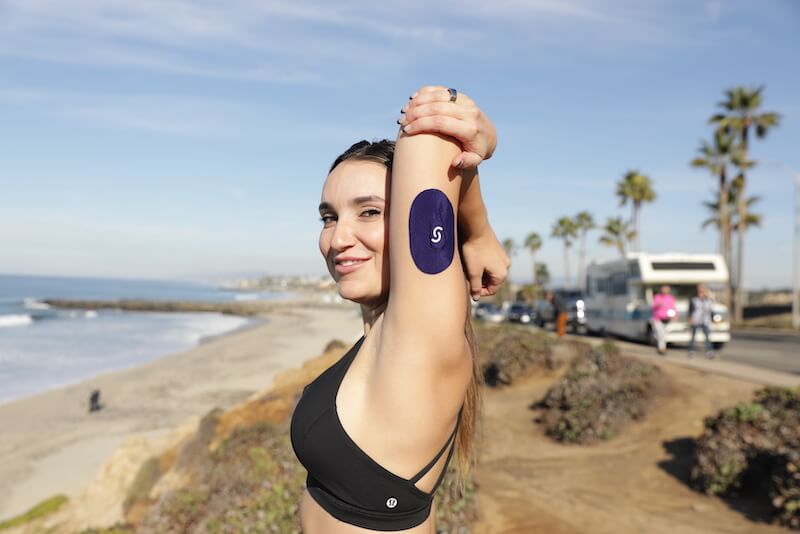
The Case for CGMs
<ul><li>CGMs are painless and safe to use. So safe that the only contraindications to their use, according to a consensus statement published in the Journal of Diabetes Science and Technology are unwillingness on the part of the patient to use them, fear of technical systems, alcohol and drug abuse, and certain psychiatric conditions<sup>6</sup>. In practice, it is rare for individuals to be opposed to using CGMs. The overall satisfaction rate of using a CGM in conjunction with a low-carbohydrate diet is 93%<sup>7</sup>.</li><li>CGMs empower individuals to be active participants in their health. CGMs provide individuals with a wealth of data on their unique physiological response to meals.</li><li>CGM use can lead to lifestyle improvements. Using a CGM improves adherence to exercise programs and improves physical activity<sup>8, 9</sup>.</li><li>CGMs can detect abnormal sugar elevations in people who do not fit conventional diagnostic criteria for diabetes. A frequent and justified criticism of the American healthcare system is that it is geared heavily toward the treatment of established diseases. Not enough resources are invested in prevention. The stance that glucose monitoring should be reserved only for those individuals with an established diagnosis of diabetes is an echo of this archaic philosophy. The early identification of sugar lability might help clinicians identify individuals at risk.</li><li>Seeing as there is high between-individual variability in glucose levels after the same meal, CGMs help dietary professionals deliver highly personalized dietary advice<sup>10</sup>.</li><li>The ability to provide real-time feedback following a meal positions CGMs as a potentially useful tool to help implement lifestyle changes<sup>11</sup>.</li></ul>
Spikes in blood sugar are associated with a variety of deleterious health effects including diabetes and obesity. Improved blood glucose control is associated with better health outcomes not limited to optimizing diabetes management. As CGM technology continues to improve and large data sets are collected, these devices will likely be routinely employed as “wearables” to improve health and fitness, and prevent disease.
<p class="pro-tip">Learn more: Science Behind Signos</p>
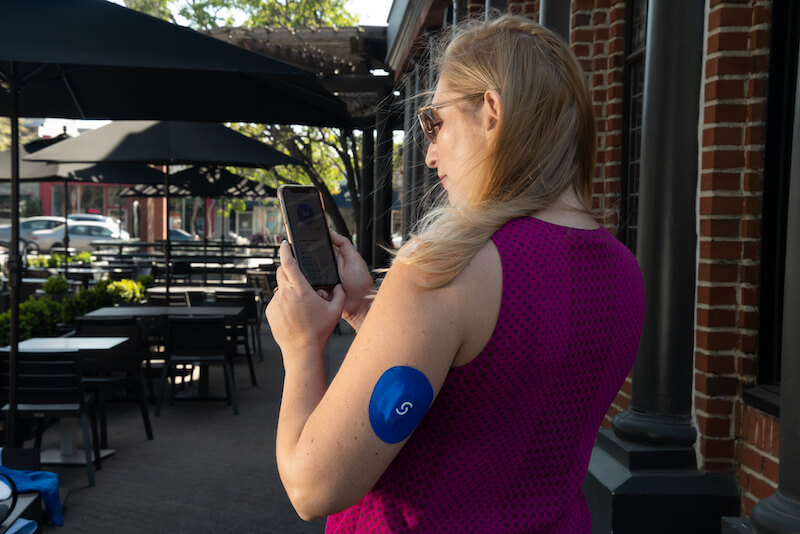
<p class="pro-tip">Take the Signos Quiz</p>
- Item 1
- Item 2
- item 3
Topics discussed in this article:
References
- Signos Inc, & Kim, S., M. D. , MPH. (2021, November 16). Use of Continuous Glucose Monitoring in Non-Diabetic Population to Compliment Signos Mobile Health Platform. ClinicalTrials.Gov. Retrieved March 28, 2022, from https://clinicaltrials.gov/ct2/show/NCT05121844
- Newsholme, E., & Dimitriadis, G. (2001). Integration of biochemical and physiologic effects of insulin on glucose metabolism. Experimental and Clinical Endocrinology & Diabetes, 109(Suppl 2), S122–S134. https://doi.org/10.1055/s-2001-18575
- Velasquez-Mieyer, P. A., Cowan, P. A., Arheart, K. L., Buffington, C. K., Spencer, K. A., Connelly, B. E., Cowan, G. W., & Lustig, R. H. (2003). Suppression of insulin secretion is associated with weight loss and altered macronutrient intake and preference in a subset of obese adults. International journal of obesity and related metabolic disorders : journal of the International Association for the Study of Obesity, 27(2), 219–226. https://doi.org/10.1038/sj.ijo.802227
- Matthan, N. R., Ausman, L. M., Meng, H., Tighiouart, H., & Lichtenstein, A. H. (2016). Estimating the reliability of glycemic index values and potential sources of methodological and biological variability. The American Journal of Clinical Nutrition, 104(4), 1004–1013. https://doi.org/10.3945/ajcn.116.137208
- Kolb, H., Stumvoll, M., Kramer, W., Kempf, K., & Martin, S. (2018). Insulin translates unfavourable lifestyle into obesity. BMC Medicine, 16(1). https://doi.org/10.1186/s12916-018-1225-1
- Liebl, A., Henrichs, H. R., Heinemann, L., Freckmann, G., Biermann, E., & Thomas, A. (2013). Continuous Glucose Monitoring: Evidence and Consensus Statement for Clinical Use. Journal of Diabetes Science and Technology, 7(2), 500–519. https://doi.org/10.1177/193229681300700227
- Yost, O., DeJonckheere, M., Stonebraker, S., Ling, G., Buis, L., Pop-Busui, R., Kim, N., Mizokami-Stout, K., & Richardson, C. (2020). Continuous Glucose Monitoring With Low-Carbohydrate Diet Coaching in Adults With Prediabetes: Mixed Methods Pilot Study. JMIR Diabetes, 5(4), e21551. https://doi.org/10.2196/21551
- Kaitlyn J. Bailey, Jonathan P. Little, and Mary E. Jung.Diabetes Technology & Therapeutics.Mar 2016.185-193.http://doi.org/10.1089/dia.2015.0285
- Allen, N. A., Fain, J. A., Braun, B., & Chipkin, S. R. (2008). Continuous glucose monitoring counseling improves physical activity behaviors of individuals with type 2 diabetes: A randomized clinical trial. Diabetes Research and Clinical Practice, 80(3), 371–379. https://doi.org/10.1016/j.diabres.2008.01.006
- Zeevi, D., Korem, T., Zmora, N., Israeli, D., Rothschild, D., Weinberger, A., Ben-Yacov, O., Lador, D., Avnit-Sagi, T., Lotan-Pompan, M., Suez, J., Mahdi, J. A., Matot, E., Malka, G., Kosower, N., Rein, M., Zilberman-Schapira, G., Dohnalová, L., Pevsner-Fischer, M., . . . Segal, E. (2015). Personalized Nutrition by Prediction of Glycemic Responses. Cell, 163(5), 1079–1094. https://doi.org/10.1016/j.cell.2015.11.001
- Ehrhardt, N., & al Zaghal, E. (2018). Behavior Modification in Prediabetes and Diabetes: Potential Use of Real-Time Continuous Glucose Monitoring. Journal of Diabetes Science and Technology, 13(2), 271–275. https://doi.org/10.1177/1932296818790994




